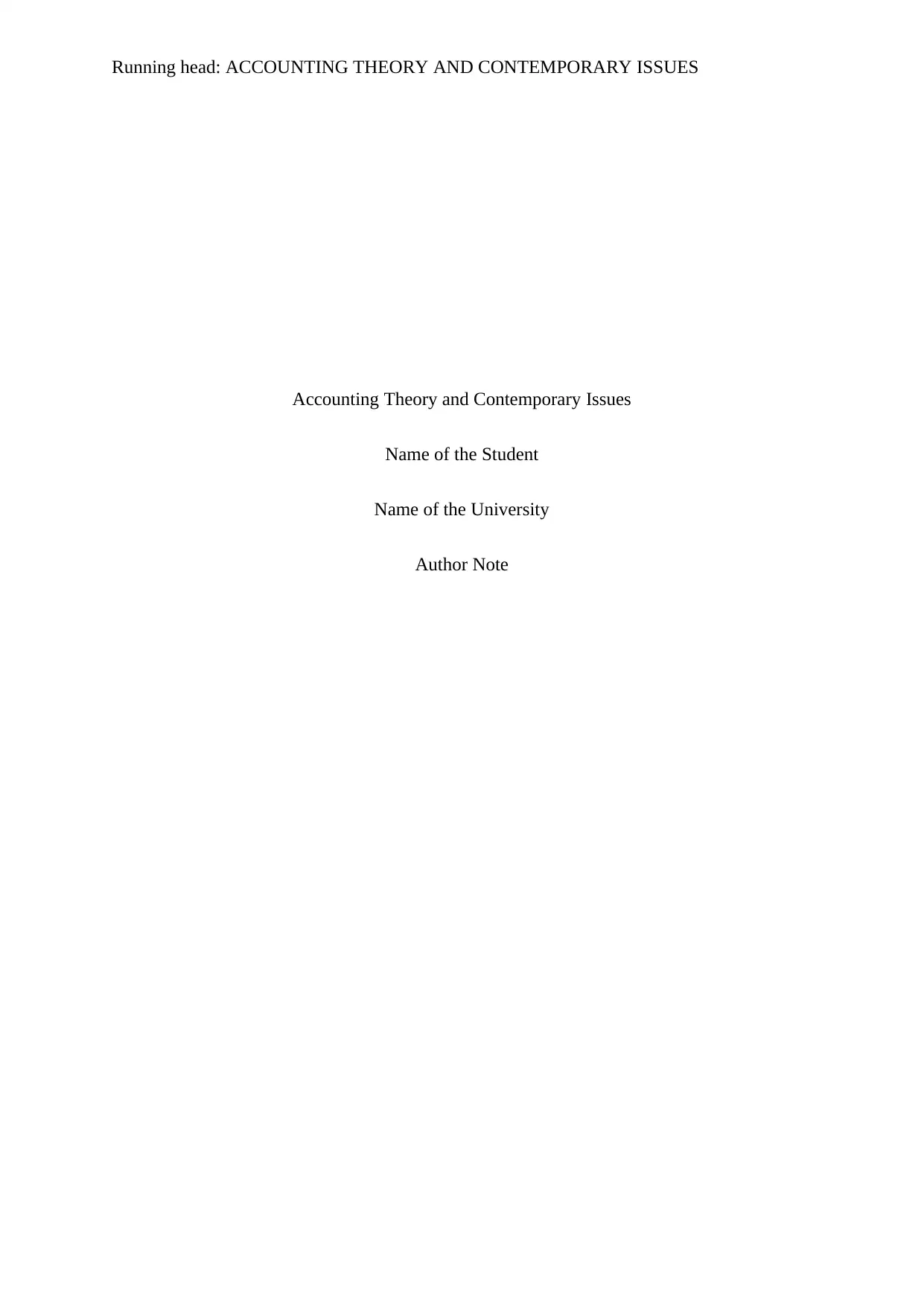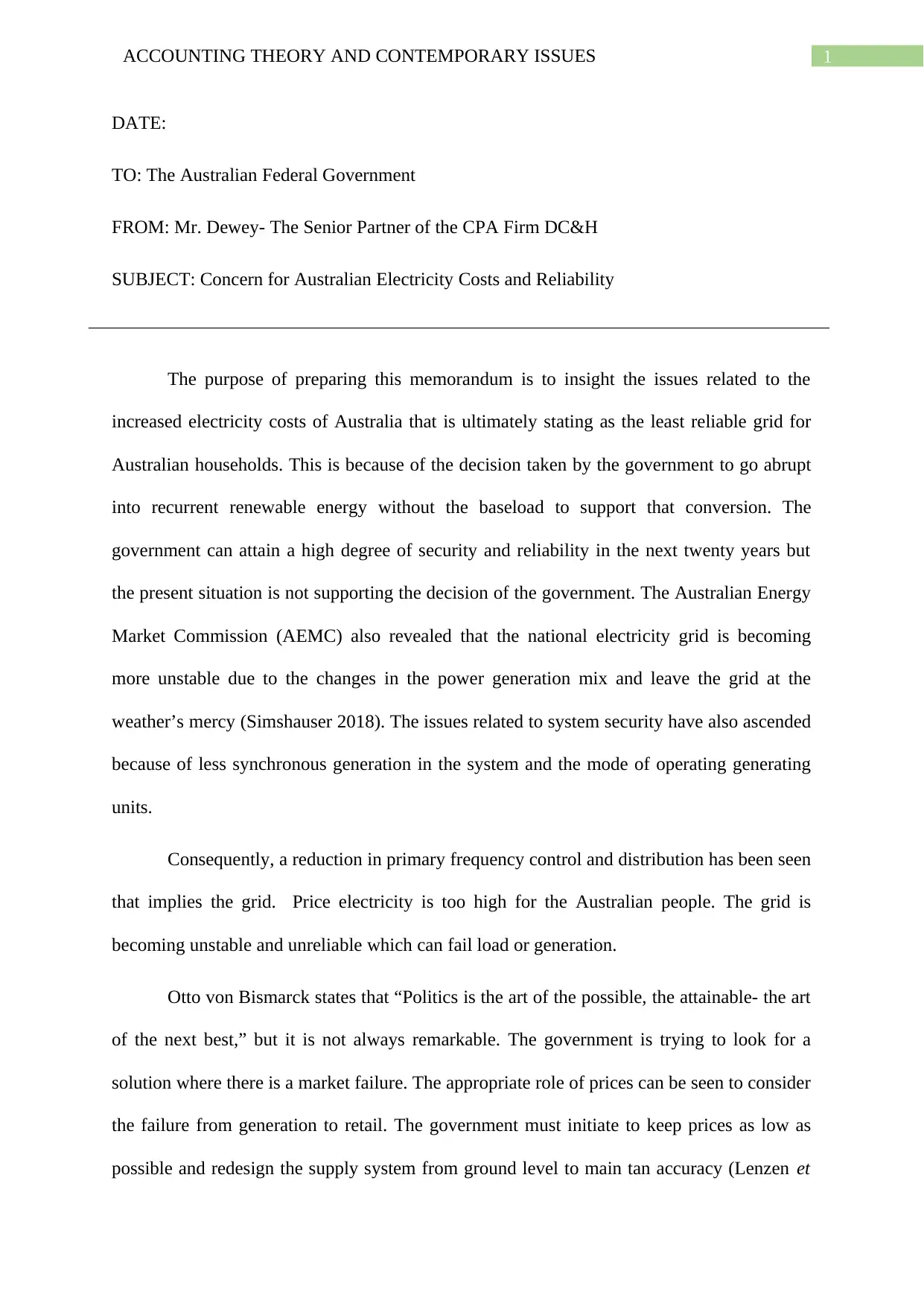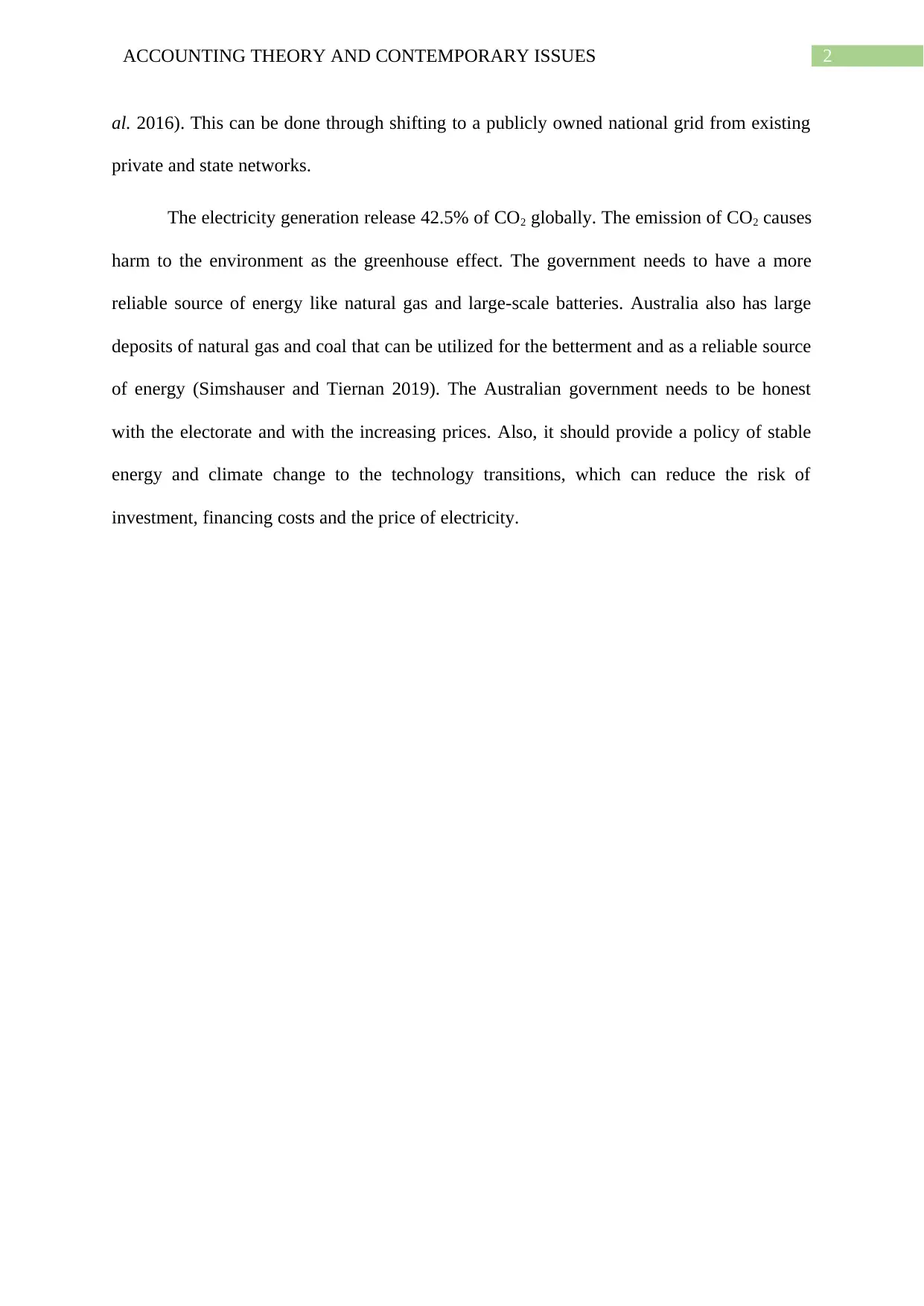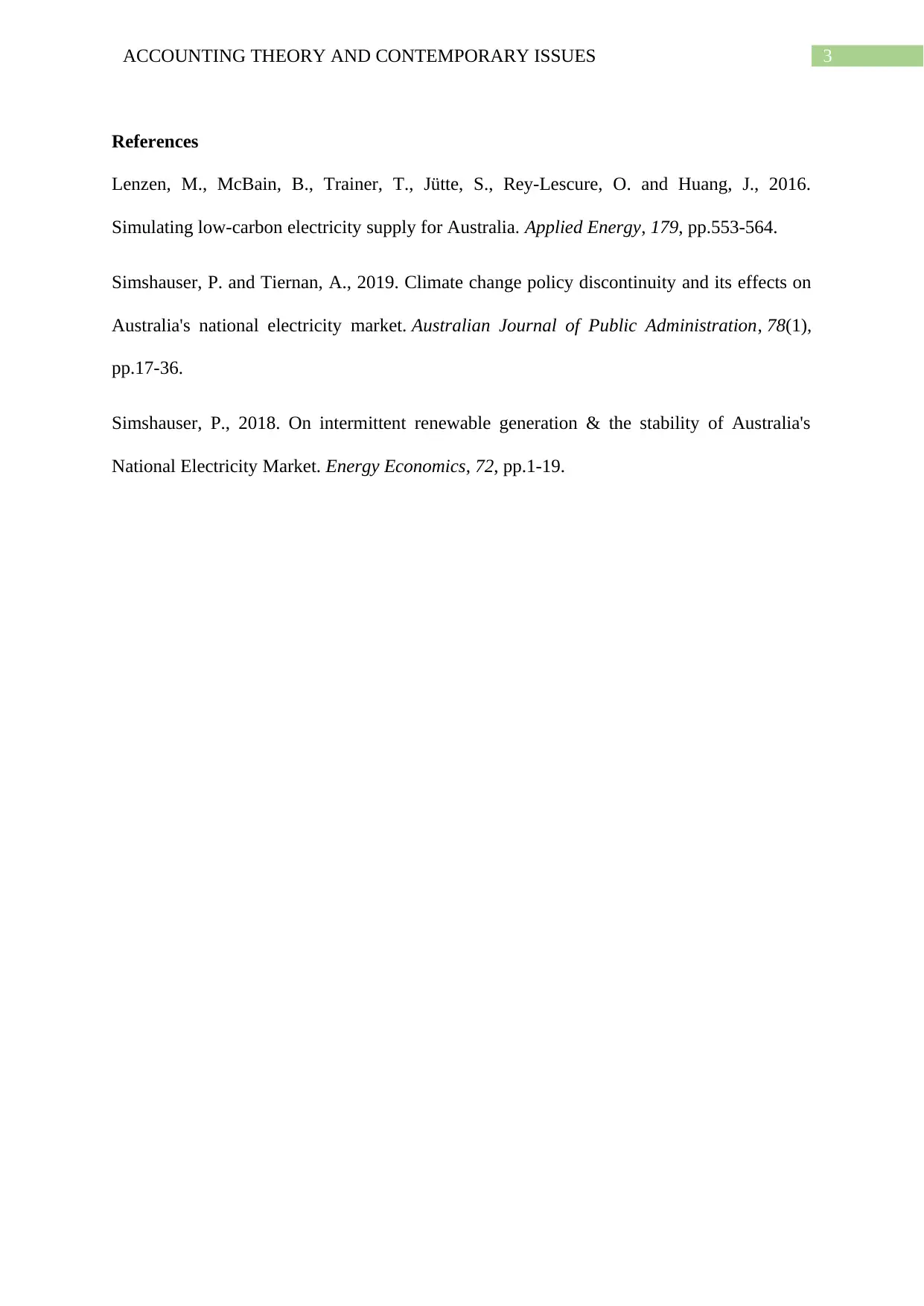Analysis of Australian Electricity Costs, Reliability, and Policy
VerifiedAdded on 2022/08/14
|4
|604
|12
Report
AI Summary
This report addresses the pressing issue of rising electricity costs and declining reliability in Australia, examining the transition to renewable energy and its impact on the national grid. It highlights the instability caused by intermittent renewable generation and the need for a more reliable energy source, such as natural gas and large-scale batteries. The report critiques current government policies, emphasizing the importance of stable energy and climate change policies to reduce investment risks and lower electricity prices. The author suggests shifting to a publicly owned national grid and stresses the importance of honest communication with the electorate. The report also discusses the environmental impact of electricity generation and advocates for a balanced approach to energy sources to ensure both environmental sustainability and economic stability. The report concludes with a call for policy changes that prioritize grid stability, affordability, and long-term energy security.
1 out of 4











![[object Object]](/_next/static/media/star-bottom.7253800d.svg)